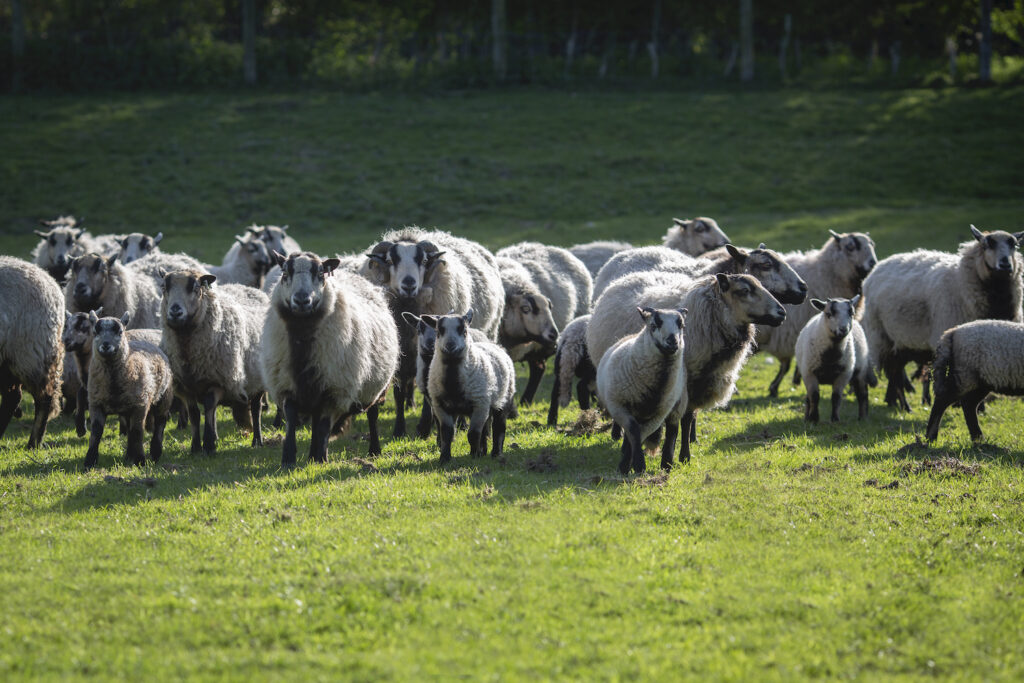Missed opportunities for EAE testing, survey reveals
22nd June 2021
Veterinary advisor warns of ‘abortion storm’ in following year’s lambing season for the 44 per cent of farmers who do not investigate why ewes are aborting.

Close to half of the UK’s sheep farmers do not ask their vet to investigate abortions when the problem occurs in more than two per cent of their flock, according to the National Enzootic Abortion of Ewes (EAE) Survey. The survey also revealed hesitancy in vaccinating against EAE, despite Ruma recommendations to increase vaccination over five years.
Commissioned by Ceva Animal Health and supported by the National Sheep Association (NSA), the survey generated responses from 322 farmers with 83 per cent of respondents owning a flock of over 100 ewes. It offered insights into farmers’ experiences of EAE and disease patterns in their flocks to help improve the approach to managing the condition.
“Financially and reproductively devastating”
Over three-quarters of those questioned had experienced abortions in their ewes during both the 2018/2019 and 2019/2020 lambing seasons. Of those that experienced abortions during the 2019/2020 season, a quarter reported that the problem occurred in more than two per cent of their flock.
Investigation by a vet is recommended if two per cent or more of a total flock have aborted or if two or more ewes have aborted over two to three days, irrespective of the size of the flock. However, the survey revealed that 44 per cent of farmers whose flocks experienced abortions during the 2019/2020 lambing season did not ask their vet to investigate the cause.
Ceva Animal Health’s ruminant veterinary advisor, Katherine Timms, who analysed the results of the survey, comments: “Farmers who decide not to investigate why their ewes are aborting may well experience an abortion storm during the following year’s lambing season as Chlamydia abortus, the bacteria that causes EAE, has the ability to lay latent in ewes until the next pregnancy.
“This means that one infected sheep shedding at lambing has the potential to infect multiple ewes that will almost certainly abort at their next lambing. The consequences can be financially and reproductively devastating for farmers and it’s advisable that farmers speak to their vet about testing for EAE to prevent this from happening.
“During lambing the submission of samples to a veterinary lab will often be advised by your vet, however this is not always feasible. Ceva’s Assure Ewe programme offers farmers subsidised testing for Chlamydia abortus. Aborted ewes can be tested for Chlamydia abortus, ideally from three weeks to three months after lambing.”
Vaccination hesitancy
The Responsible Use of Medicines in Agriculture Alliance (RUMA) Targets Task Force report of 2017 supported vaccination by recommending that farmers increase the use of vaccines for EAE by five per cent over five years, to ensure the responsible use of antibiotics.
Despite this, almost half of the farmers surveyed did not vaccinate for EAE in the run up to 2019/2020 lambing, yet 57 per cent of those not currently vaccinating would consider it.
Reasons not to vaccinate (those questioned could tick multiple boxes) included farmers believing that they had closed flocks (59 per cent) and EAE not having been diagnosed (57 per cent); only a fifth decided not to vaccinate because of cost and a quarter decided not to as they did not feel it was worthwhile.
Is biosecurity up to scratch?
“In addition to vaccination, biosecurity is also an important factor,” comments Katherine. “With 59 per cent of farmers questioned perceiving that they have closed flocks, it is advisable to determine whether this is actually the case, with considerations including neighbouring farmers grazing their flocks on adjoining land.
“Biosecurity is also a significant issue when buying in replacement ewes; half of those questioned reported that they buy in replacements, however 63 per cent did not keep these separate from their flock until after they had lambed, putting the whole flock at risk of infection.”
Prevention not cure
Independent sheep veterinary consultant, Dr Fiona Lovatt, says: “I found it very interesting that this survey showed that a number of farmers said they do not vaccinate for EAE because they have not had EAE diagnosed. In my opinion it is most appropriate to consider vaccinating a flock well before it is diagnosed – as by the time it is in a flock, considerable damage has already occurred.
“The risks of buying in ewes are much less scary if the flock is already EAE-vaccinated. Key to controlling abortion is to isolate aborting ewes from the rest of the flock and therefore ideally bought in ewes should be lambed separately in their first year. It is also very important to get a diagnosis from any abortion to ensure appropriate action can be taken.
“EAE is definitely a disease where a sensible vaccination programme makes huge sense; EAE vaccination is not expensive, so for any flock that buys ewes in or has sheep neighbours, it pays for itself several times over.”
Ceva is continuing its ‘For Flock’s Sake – Vaccinate!’ initiative during 2021 to help raise awareness of EAE and highlight the important role of vaccination, which can be done any time from five months of age until four weeks prior to tupping, as long as the ewe is not in lamb.
For more information on Ceva Animal Health’s ‘For Flock’s Sake – Vaccinate!’ initiative, vaccination with Cevac Chlamydia or the company’s Assure Ewe programme, visit www.enzooticabortion.co.uk or contact your local vet.
